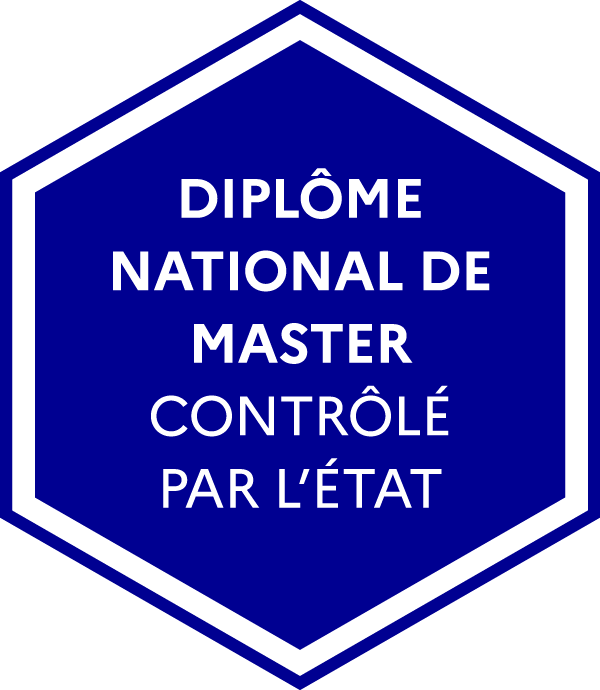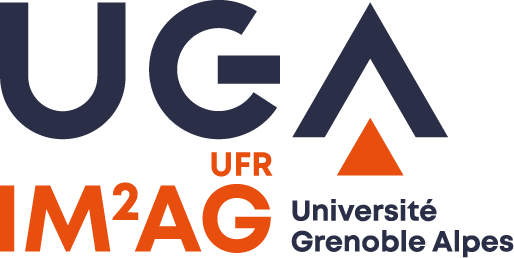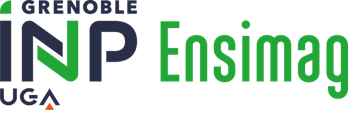Overview
Master
National diploma- Home institution(s) Grenoble INP - Ensimag
- Degree awarded Master
- Graduation year Bac + 5
- Graduation level Level 7
-
Location
- GRENOBLE Campus
- Duration 2 years (4 semesters)
-
Available as
- Initial education
- Continuing education
Summary
Objectives
It is a highly competitive, two-year European Standard (LMD) graduate program, taught in English, offering training on:
- Data Science
- Modeling, Scientific Computing and Image Analysis.
Specificities
Our graduates are trained to become experts and leaders in scientific and technological projects where mathematical modeling and computing issues are central, in industry or research. A large and distinguished graduate Faculty participate in the program, bringing their expertise in a wide range of areas of mathematics including applied analysis, numerical analysis and scientific computing, probability theory and statistics, computational graphics, image analysis and processing, and applied geometry.
Further information on M1 AM website.
Further information on M2 SIAM website.
-
Training partners
Laboratories- LIG,
- LJK,
- TIMA,
- VERIMAG,
- GIPSA,
- ICA,
- CERAG,
- EUROFIDAI
Companies- Université Grenoble Alpes
Admission
- Who should apply? Bac + 3, Bac + 4
- required training
- Tuition fees Registration fees for initial training: public university fees (more information on the "Apply now" section)
-
Available as :
- Initial education
- Continuing education
Entry requirements
AM (M1)
To be admitted to the program, candidates must have previously completed their undergraduate studies and been awarded a Bachelor degree in Mathematics or Applied Mathematics.
Who can apply?
- Anyone holding a L3 or Bachelor Degree in mathematics or applied mathematics or an equivalent degree, interested in pursuing a high level mathematical education and motivated by the applications of mathematics.
- Students from related backgrounds (physics, computer science, engineering, etc) may also apply provided they possess outstanding mathematical qualifications and are highly motivated by applications.
MSIAM (M2)
To be admitted to the program, candidates must have previously completed their undergraduate studies and been awarded a Bachelor degree in Mathematics or Applied Mathematics.
- Anyone holding a first year of master 60ECTS credits in mathematics or applied mathematics or an equivalent degree, interested in pursuing a high level mathematical education and motivated by the applications of mathematics.
- Students from related backgrounds (physics, computer science, engineering, etc) may also apply provided they possess outstanding mathematical qualifications and are highly motivated by applications.
Important notes
-
Students from related backgrounds (physics, computer science, engineering, …) may also apply provided they possess outstanding mathematical qualifications and are highly motivated by applications.
-
Eligibility: only individuals who have an excellent academic record will be considered. Applications from students from traditionally underrepresented groups are particularly encouraged.
-
Academic standing: Fellows must maintain full-time status in the Master’s program, and must be engaged in full-time coursework or research during the academic year (september 1st–July 31st).
Language requirements
-
Students are required to provide evidence of competence in English, mainly from tests validated with a B2 level. The accepted tests and scores are listed on our admission webpage.
Apply now
Contacts
M1 : Boris Thibert et Sylvain Meignen
M2 : Christophe Picard et Sana Louhichi
Education contact
Contact : msiam@ensimag.fr
Program
- Course duration 2 years (4 semesters)
- Internships mandatory
Program
Tracks during fall semester
The first semester of MSIAM master 2 is essentially divided in two tracks. Each student should be registered in one of the following tracks:
- Modelling, Scientific Computing and Image analysis (MSCI)
- Data Science
However a personalized track may also be build for some students from the available courses (if no timetable conflicts appears). The personalized tracks must be approved by the Professors in charge of MSIAM.
Academic program
- 30 ECTS scientific courses (3 or 6 each, excluding French language course).
Detailed program
International
- Language of instruction English
- Internship abroad No
- Erasmus areas Mathematics, Computer science
Prospects
- Graduation year Bac + 5
- Graduation level Level 7
Careers
- researcher or engineer in applied mathematics, statistics, data science, scientific computing, imaging, geometry
- in industry such as transports, manufacturing (any innovative object is concerned by MSCI and CAD), Medical / Pharmaceutical (modelling of systems [CT scanner, MRI, hybrid imaging, robots, etc.], life and biomedical modelling), Chemical (modelling and simulation of reactions), Environment, Big Data (data and image modelling and analysis) …
Further learning opportunities
Depending on the nature of their practicum, students may wish to pursue research in a doctoral thesis.


Your contacts for academic information
Internships
M2 : 4 months



